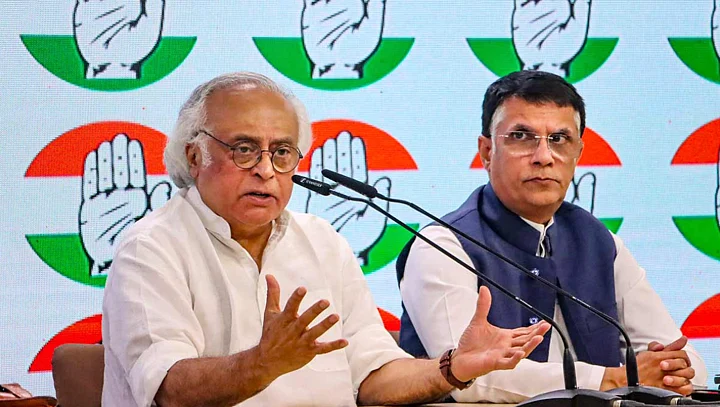This is the second occasion within a few months that psephologists have had to bite the dust. Their predictions about the Haryana assembly elections were as off the mark as the Lok Sabha ones earlier this year.
The results in Haryana have confounded popular perception because exit polls, political analysts, and journalists reporting from the ground were anticipating a resounding victory for the Congress party. Yogendra Yadav, whose predictions for Lok Sabha elections in May were almost spot on, had even said that the trend was in favour of the grand old party and the only question was whether it was a wave or a tsunami.
Questions need to be asked about the diversity of the respondents selected by psephologists and pollsters. They need to fine-tune their methodology in order to not have their credibility smashed.
One view is that the sampling during the exit polls was mainly done in the areas dominated by the Jats. Another view is that the BJP campaign focussed on exploiting the differences between Jat strongman Bhupinder Singh Hooda and Kumari Selja, propagating that communities other than the Jats were going to face domination if the Congress was voted to power.
Everyone, till the day of the results, was of the opinion that there was a groundswell of opposition in Haryana to the union and state policies. The unemployment rate in the state is said to be one of the highest in the country, further aggravated by the introduction of the Agnipath scheme. It became an emotional issue for the youth of Haryana because joining the defence services is considered to be a matter of pride.
The farmers of Haryana, through a prolonged agitation against the three farm laws, had displayed their disenchantment with both "double-engine" governments. Police action during the protests further angered the farmers. Urban and rural infrastructure, particularly the roads, are in very bad shape, especially after the recent rains. Inflation has severely affected the cost of living.
It is, therefore, suffice to say that there was heavy anti-incumbency against the ten-year-old BJP government in the build-up to the election.
In spite of the odds being stacked against the BJP, it scored a hat-trick by securing a majority with 48 seats in a closely fought election. According to reports, the vote share of the BJP is 39.9 percent as compared to 39 percent of the Congress party. According to Prannoy Roy, the less than one percent lead in vote share, translating into an 11-seat advantage, ie, 30 percent more seats, is extremely unusual by any psephological standards.
Compared to this narrow margin, the difference in the vote percentage during the Lok Sabha elections in May was 2.5 percent with the BJP getting 46.3 percent and Congress getting 43.8 percent. The two parties had shared five seats each in those elections.
Analysts and experts will, in due course, analyse the reasons for an outcome that has belied general perception. However, this unexpected outcome has once again raised several questions about the credibility of EVMs.
The Congress has, in fact, gone to the Election Commission, with the complaint that the EVMs have 99 percent battery charge in as many as 20 constituencies, even after being kept in the strong rooms for over two days. There have also been allegations that wherever defects have been noticed in the machines, the votes have gone in favour of a particular party. The facts can only be revealed through a detailed inquiry.
The credibility of EVMs has been a consistent issue. BJP MP GVLN Rao has even written a book raising doubts over their functioning. The book had a foreword written by former Leader of the Opposition and BJP veteran LK Advani. The major issue then raised was that there should be a physical output of the votes cast in the EVMs.
This was rectified by the introduction of VVPATs (voter-verified paper audit trail). However, the counting of the votes is done only through the data in the EVM. Initially, the EC had mandated tallying one randomly selected EVM in a constituency with the VVPATs. This has been increased to five polling booths in each constituency after the intervention of the Supreme Court.
The procedure adopted does not lend itself to transparency. Several lacunae have been cited by organisations like the Association of Democratic Reforms and independent journalists with respect to the votes cast and the data available on the site of the Election Commission.
As the saying goes, “Justice must not only be done, but must also be seen to be done.” It would, then, be in the fitness of things to eliminate the general impression that EVMs are being used by the party in power to distort the mandate in its favour. Carrying out a 100 percent tallying of the EVM and VVPAT votes would settle the matter once and for all.
(Sanjiv Krishan Sood (Retd) has served as the Additional Director General of the BSF and was also with the SPG. He tweets @sood_2. This is an opinion piece and the views expressed above are the author’s own. The Quint neither endorses nor is responsible for the same.)
(At The Quint, we question everything. Play an active role in shaping our journalism by becoming a member today.)
